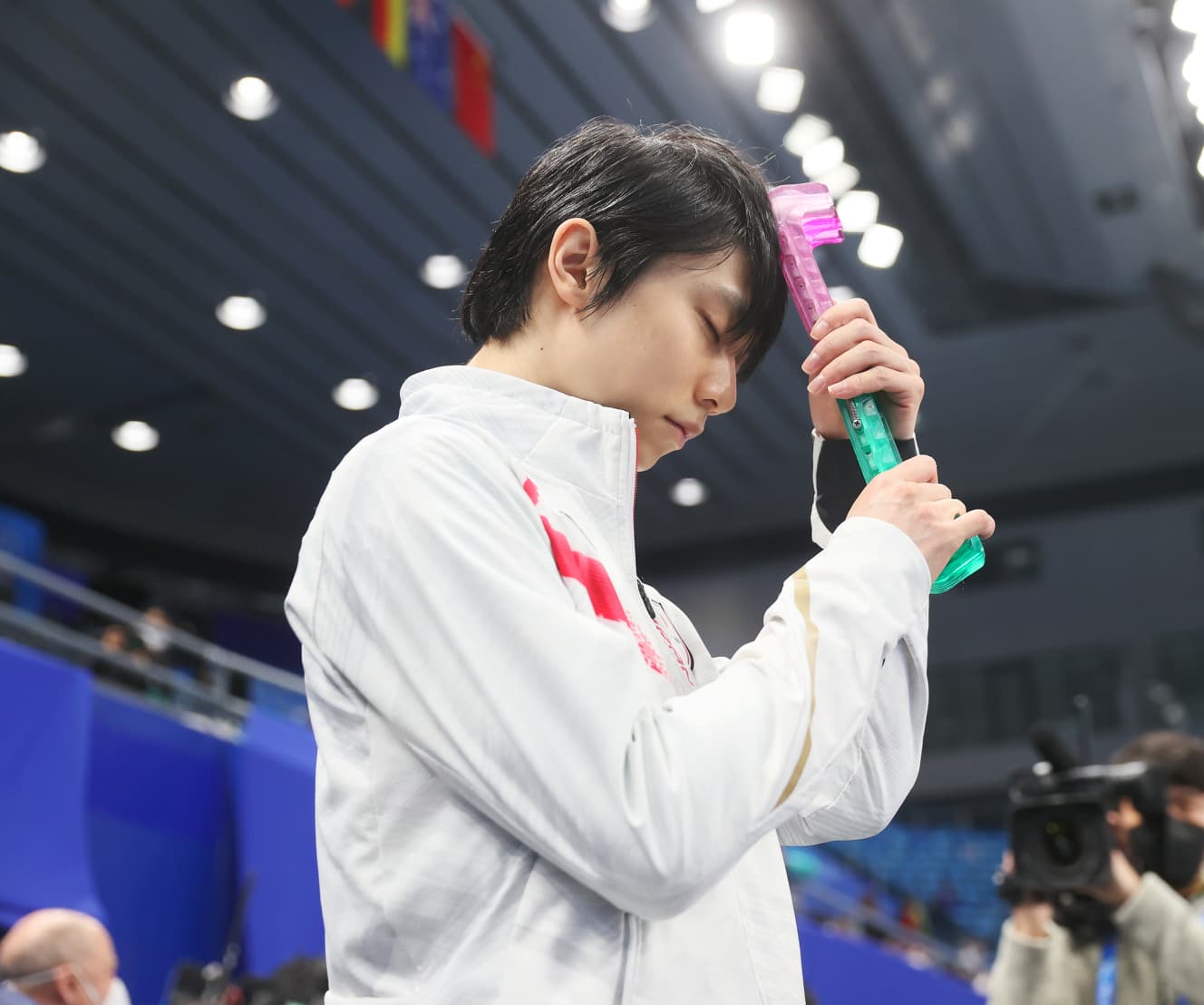Before his performance at the Beijing Olympics in February, where he won his third consecutive Olympic championship, Hanyu put the edge covers of his skates on his forehead. It is a routine to show his gratitude (Photo: Japan Magazine Association).Further examination of the prize money for winning the competition revealed that if he had won the gold medal at the Beijing Olympics in February, the reward would have been 5 million yen. Furthermore, the World Championships, the largest competition sponsored by the International Skating Union (ISU) held after the Olympics, was 8.64 million yen ($64,000), and under the regulations, the Japan Skating Federation provides an additional 1 million yen reward. In addition, the Four Continents Championships is 2.835 million yen ($21,000), the GP Final is 3.375 million yen ($25,000), and the GP Series is 2.43 million yen ($18,000). Assuming that he won all the competitions, he would get 23.28 million yen (calculated at 135 yen per a dollar). Figure skating, however, is expensive. It is said that the cost of shoes for a top-class skater is 300,000 to 500,000 yen per year. If a skater has a world-renowned coach, he or she will usually negotiate a one-year contract with a minimum annual fee of 10 million yen. Adding the cost of costumes and the use of the rink to this, at the very least, a top-class figure skater in Japan would have to spend close to 20 million yen a year to compete in a season. If you want to cover 20 million yen in annual expenses, the fixed cost of 2.4 million yen is not enough. Even if you win all five of the four major competitions (World Championships, GP Series, GP Finals, and Four Continental Championships) where there is prize money, you would only have 5.68 million yen in fixed costs after deducting expenses. It is extremely difficult to win all the competitions, and the reality is that even for an athlete of Hanyu’s level, the prize money alone would be “in the red”. Considering that Hanyu is one of Japan’s leading athletes, this is insufficient. Therefore, they would like to rely on an increase in the exclusive contract fee (2) from ANA, commercials, sponsorship fees, and publication royalties, but the amount of money varies greatly depending on the success of the season and the social situation. Before the Beijing Olympics, Chinese-language editions of his autobiography were sold locally and piled up, but it is unknown how much of the royalties will be Hanyu’s income. Incidentally, Shohei Otani, who is the same age as Hanyu and is active in the major leagues, has an annual salary of $5.5 million (about 710 million yen) this season. It is impossible that Ohtani would risk incurring a deficit after deducting expenses incurred in the course of his baseball career. This shows how Hanyu has been competing in a difficult financial situation.
